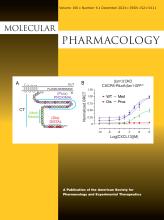Abstract
ATP-binding cassette (ABC) transporters expressed at the blood-brain barrier (BBB) impede delivery of therapeutic agents to the brain, including agents to treat neurodegenerative diseases and primary and metastatic brain cancers. Two transporters, ABCB1 and ABCG2, are highly expressed at the BBB and are responsible for the efflux of numerous clinically useful chemotherapeutic agents, including irinotecan, paclitaxel, and doxorubicin. Based on a previous mouse model, we have generated transgenic zebrafish in which expression of NanoLuciferase (NanoLuc) is controlled by the promoter of glial fibrillary acidic protein, leading to expression in zebrafish glia. To identify agents that disrupt the BBB, including inhibitors of ABCB1 and ABCG2, we identified NanoLuc substrates that are also transported by ABCB1, ABCG2, and their zebrafish homologs. These substrates will elevate the amount of bioluminescent light produced in the transgenic zebrafish with BBB disruption. We transfected HEK293 cells with NanoLuc and either human ABCB1, ABCG2, or their zebrafish homologs Abcb4 or Abcg2a, respectively, that are expressed at the zebrafish BBB. We evaluated the luminescence and transporter substrate status of 16 NanoLuc substrates. We identified eight substrates that were efficiently pumped out by ABCB1, six by Abcb4, seven by ABCG2, and seven by Abcg2a. These data will aid in the development of a transgenic zebrafish model of the BBB to identify novel BBB disruptors and should prove useful in the development of other animal models that use NanoLuc as a reporter.
SIGNIFICANCE STATEMENT The ATP-binding cassette (ABC) transporters ABCB1 and ABCG2 at the blood-brain barrier (BBB) hinder pharmacological treatment of brain-related diseases. Consequently, there is a need for tools to identify BBB disruptors. This study screened 16 NanoLuciferase substrates, identifying the brightest and those that were transported by human and zebrafish ABC transporters at the BBB. This work supports and complements development of a transgenic zebrafish model, in which NanoLuciferase is expressed within glial cells, enabling detection of BBB disruption.
Footnotes
- Received September 29, 2023.
- Accepted September 12, 2024.
This research was supported by the Intramural Research Program of the National Institutes of Health National Cancer Institute (to C.T.I., J.A.Q., S.S., C.C.L., R.W.R., J.R.T., and M.M.G.). It was also supported by the UMD-NCI Partnership for Integrative Cancer Research (to C.T.I., J.A.Q., H.C.-H., R.W.R., and M.M.G.).
J.R.W. and W.Z. are or were employees of Promega Corporation and developed the novel furimazine analogs used in this study.
A preprint of this article was deposited in bioRxiv [https://doi.org/10.1101/2023.10.20.563277v1].
- U.S. Government work not protected by U.S. copyright
MolPharm articles become freely available 12 months after publication, and remain freely available for 5 years.Non-open access articles that fall outside this five year window are available only to institutional subscribers and current ASPET members, or through the article purchase feature at the bottom of the page.
|






